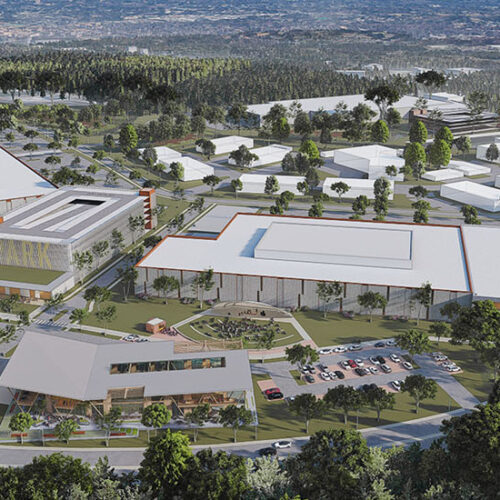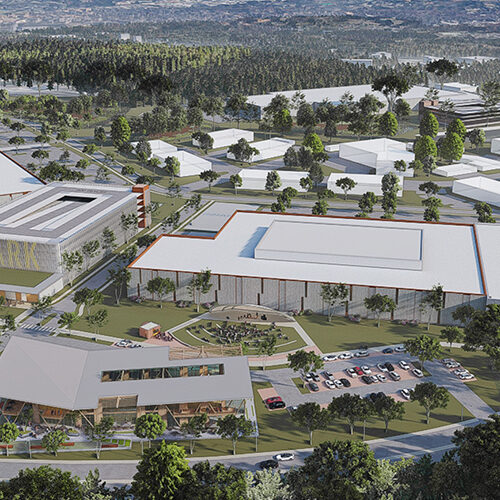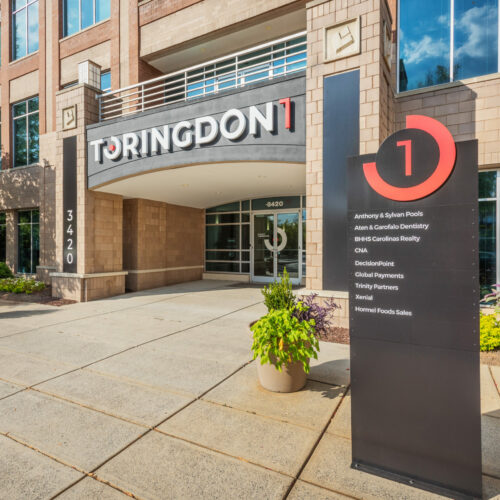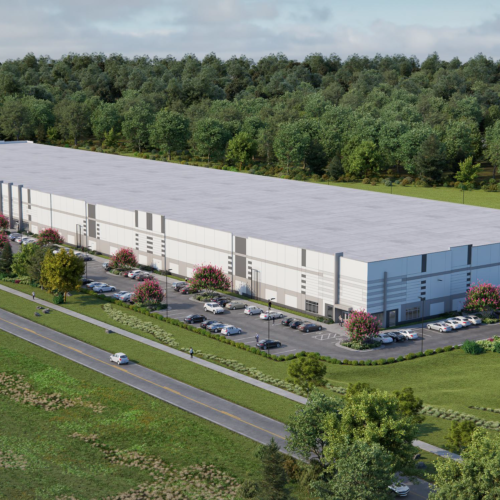What’s next for Concord’s Philip Morris site?
November 30, 2012
By Ken Elkins
Charlotte Business Journal
Originally published November 30, 2012
The Charlotte region has seen a steady recovery in manufacturing and distribution projects since the Great Recession. Yet, the massive Philip Morris plant in Concord remains vacant three years after the company moved cigarette production to Richmond. Gone are 1,100 jobs and $7 million in local tax revenue. Boosters envision big things ahead for the 2,000 acres and 3.3 million square feet of empty buildings. But when and what that will be is far from a done deal.
When David Allen toured the vacant Philip Morris cigarette plant in Concord, the Trinity Capital Advisors partner found the massive, 2.3 million-square-foot plant a perfect fit. For a cigarette factory. But Allen, whose firm has deep experience in turning challenging properties into profitable investments, couldn’t envision any other use for the site as it stands today. What he found has been the common reaction of the many brokers, developers and prospects who have looked at the sprawling property, which includes the main hulking factory, another million square feet of distribution buildings and a total of 2,023 acres. Three years after Philip Morris shuttered the cigarette plant in 2009, cutting 1,100 Cabarrus County jobs, there have been many inquiries, Cabarrus County economic developers say. But no serious offers.
The result: What was once a cornerstone of the Cabarrus economy — a major contributor to the tax base and employment — is now a pastoral impediment to growth. Before the plant closed, Philip Morris was paying a combined $7 million in annual taxes to Concord and Cabarrus. That number in 2012: $652,000. Cabarrus County Manager Mike Downs says the tax revenue Philip Morris once paid is missed. But it’s the lack of jobs that has left a bigger hole in the county’s economy. Philip Morris parent Altria Group Inc. hired global real estate firm Jones Lang LaSalle to market the site. The Jones Lang LaSalle team handling the property, including two brokers in Chicago, did not respond to interview requests. The company is marketing the site as a “one-of-a-kind opportunity” that would suit large-scale manufacturing and distribution. The firm also touts the 1,500 undeveloped acres as ripe for other development.
A spokesman for Richmond, Va.-based Altria says the company would be willing to break up the site “for the right offer.” Altria executives really don’t have an opinion about how the land should be used, says Ken Garcia, the company’s manager of communications and media affairs. “It’s not for us to determine. Our goal is to dispose of the property.” But Allen and others who have looked at the property say Altria believes the buildings add value to the site. How much value is unclear; Jones Lang LaSalle won’t provide pricing details. A Cabarrus official believes Altria has an asking price of up to $100 million for the land and buildings. “The buildings for us don’t add value for a real estate investor like us,” Allen says. “They detract value. We would probably tear the main buildings down” if a deal could be reached. The site looks more like a college campus than a former cigarette factory. The main building has 330,000 square feet of parquet flooring. The entrance road winds though bucolic pastures lined by wooden fences and is dotted with lakes and walking trails. Doug Faris, senior vice president at Binswanger in Charlotte, believes the main manufacturing building on the site will eventually be demolished to make way for other construction. “The main building is a quandary,” he says. “It’s absolutely first quality, and I absolutely can’t figure what it should be used for. There is no demand for that type of reuse.”
The average industrial prospect scouting the Charlotte region wants an existing building of about 100,000 square feet with about 30 feet of clear ceiling heights. Those buildings are lacking throughout the area, says John Cox, president and chief executive of Cabarrus Regional Economic Development. “They might find a site in Cabarrus, a site in Gaston County and a single site in Rowan County,” Cox says. “If you’re looking for 100,000 square feet, 2.3 million square feet is overkill.” Also, the main building would be difficult to add bay doors to, Allen says. Plus the building’s interior walls would make it difficult, if not impossible, to create large, open areas. “The flow of the building” is a problem too, he says. Manufacturing facilities need to have a clear line to follow through the production process, not a huge building broken into smaller rooms.
Other aspects of the site are attractive, Allen says. “From an investor’s point of view, it’s an incredible piece of property.” The eight distribution buildings, which total 1 million square feet, could be used for manufacturing, warehousing and distribution, Allen and others say. “We like those buildings,” Allen says.
Ronnie Bryant, president and chief executive of Charlotte Regional Partnership, would like to see the site used as a large industrial park or other type of jobs center. “There is a conscious effort not to break it up,” he says. He suggested issuing a request for proposals to national industrial site developers to see if someone is interested in the entire site. “Look at what you can do with an office park there or an extension of the research campus,” Bryant says.
Cabarrus officials aren’t concerned so much with the how. Or even the when. They are focused on the what regarding the ultimate use of the site. “Our council members have made it clear that right now the property is predominantly zoned industrial and, as for any future use, they would want to see it as an employment center,” says Brian Hiatt, Concord city manager, referring to the Concord City Council. The undeveloped tract on one side of U.S. Highway 29 could be targeted for a mix of uses that could include retail space, offices and residences. But the bulk of the property on the south side of U.S. 29 should be industrial, Hiatt says. “That needs to be a major industrial area.”
On top of Cabarrus economic developer Cox’s list is an auto assembly plant. That’s no great surprise. Ever since BMW Manufacturing opened its plant in Greer, S.C., along Interstate 85 in 1993, the Charlotte region has placed an auto plant at the top of the wish list. Cox notes North Carolina is one of the Southeastern states with no auto manufacturers. “It is past time for automotive manufacturing to decide to build in North Carolina,” he says. Other possible propsects: energy-related manufacturing, along with motorsports, defense, life sciences, logistics and even advanced manufacturing uses. But saving a large piece of industrial real estate for a single user such as an auto plant is a “double-edged sword,” says Karlisa Parker, Chester County economic development director. Springs Holding Co. owns a 1,452-acre “megasite” in Chester County that’s been graded and supplied with nearby utilities hookups. The wait there has been more than 12 years. In 2000, Nissan Motor Co. looked at the site for an auto plant before picking Canton, Miss.
“Having those big pieces of property gets you a whole lot of looks,” she says. But so far for Chester and Cabarrus, only looks. “You always have clients looking for megasites, but they are farther and fewer between,” Parker says. “There are not as many of them.” The other edge of that sword is having the property and “not being able to break the site up,” she adds. “It’s like ‘No, we’re holding it for the big guy.’ ”



